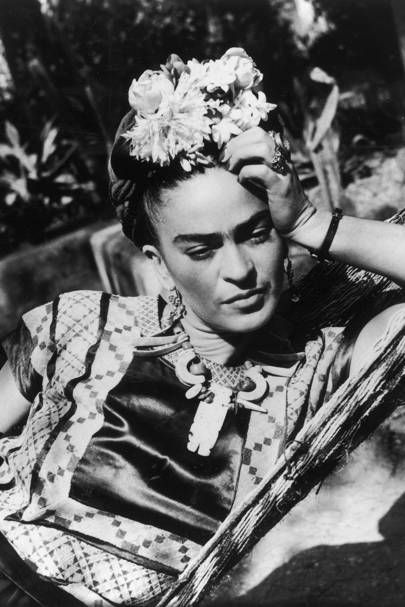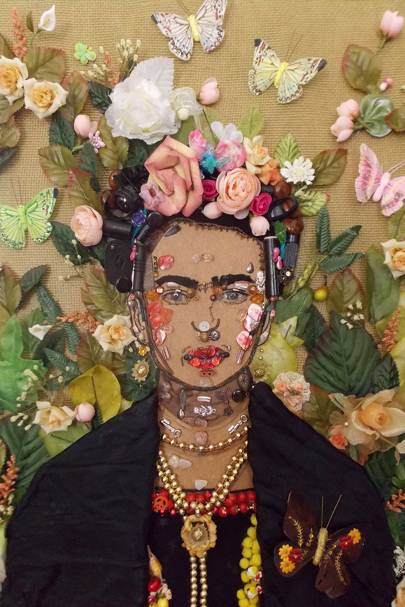"The timing couldn't have been more perfect," Claire Wilcox, senior curator of fashion at the V&A, tells Vogue of the publicity surrounding the 200 plus items that until 2004 had been locked away for 50 years. Upon her death in 1954, her muralist husband, Diego Rivera, shut her belongings in a room in their home - the Blue House on the outskirts of Mexico City - as a mark of "respect for her as an artist, as a woman and his life companion. He had the foresight and understanding to know how important she was going to be."
The exhibition opens with an "introduction to Frida's early life with her German father and Mexican mother, and charts her discovery of politics and communism, her rejection of Catholicism, her near fatal accident in her late teens and her meeting with Diego," says Wilcox. It goes on to explore the significance of her native Mexico at this point in the late 1920s, how the country was rediscovering its pre-Columbian roots and why her decision to honour traditional dress was as much of a political statement as it was an allegiance to Mexican history. "It ends in a crescendo of the beautiful, colourful, joyful garments that she is known for, and her amalgam of traditional Mexican traits with clothes from Europe," adds Wilcox.

Her relationship with fashion plays out throughout the retrospective. "Frida was attracted to the way the extraordinary women from the matriarchal society in the Mexican state of Oaxaca dressed, for multiple reasons. One was political - these were proud women who had a certain dignity," Wilcox explains. "And the clothing was not only very beautiful, but served the purpose of disguising her bad leg, her back braces and her corsets. She could dress in a flamboyant manor to disguise herself, and the more unwell she got, the more she dressed up. She presented a construction that was entirely her own and bore no resemblance to any women in her peer group. She stood out then just as she stands out now."
As an artist, Kahlo used her clothing as a metaphor for her mixed identity. In one painting, which will go on display, Wilcox notes, "She dresses herself in a man's suit with her cut-off hair on the floor, as a symbol of her marriage." In other self-portraits, she depicts herself in forensic detail, painting every single facial hair onto the canvas.
"Her face is timeless, captivating, charismatic," muses Wilcox of her enduring appeal. "She wasn't particularly famous as a painter at the time, but she was a photogenic celebrity. As the power of her art increased over the decades, the power of her image has been disseminated through the internet so more and more people recognise her as a strong woman."
"Her face is timeless, captivating, charismatic," muses Wilcox of her enduring appeal. "She wasn't particularly famous as a painter at the time, but she was a photogenic celebrity. As the power of her art increased over the decades, the power of her image has been disseminated through the internet so more and more people recognise her as a strong woman."

Personal items in the V&A collection include her eyebrow pencils - "Diego referred to her brows as magnificent bird wings, and she used to sign off her correspondence with a sketch of wings" - and the bespoke boots for the prosthetic leg she wore in the last year of her life, which she accessorised herself, "because she never wore anything she wasn't in total control of".
The object Wilcox finds most touching, however, is "a necklace made from pre-Columbian beads from old excavations and grave sites, which Frida strung together. On one of the jade beads there is a tiny dab of green paint, where she tried to meticulously match her paint to her necklace. This material evidence shows that as an artist and a woman she regarded her appearance as a powerful tool, something that still resonates today."

No comments:
Post a Comment